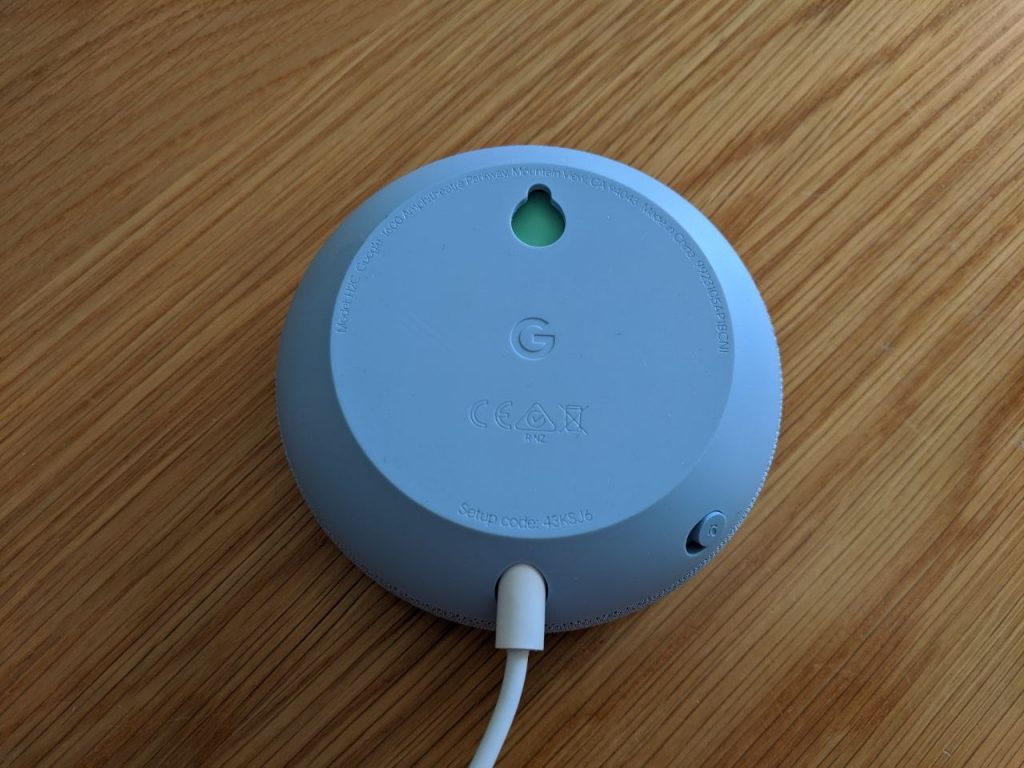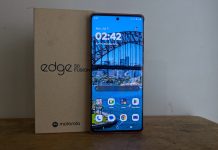Google unveiled its latest products on Wednesday at its Made by Google event in New York, amongst them was the new Nest Mini the successor to the original Google Home Mini. We’ve hand one in our hands since launch and have been putting it through its paces and we’re comfortable in saying that it is an upgrade in almost every way.
While from the outside you’d be forgiven for thinking that nothing has changed between the Home Mini and the Nest Mini but look just a little deeper and you’ll find little enhancements all across the device that are the hallmark of a good 2.0 product, even the boot-up sound is nicer.
So should you get the Nest Mini over the Home Mini? Read on to find out.
DESIGN
The overall look and feel of the Nest Mini hasn’t changed much, its got the same basic size and shape and Google’s hardware team continues to use the same soft textile finishes, there is one nice new addition however, the introduction of a new hanging hook on the rear of the device.
Google has further focused on renewable design this year with the outer fabric being made from 100% post-consumer plastic and the internal frame begin made from 35% post-consumer waste. One recycled 600 ml plastic drink bottle can make the fabric for 2 Nest Minis – that’s awesome.
CONTROLS
Before we discuss the different control options for the Nest Mini it’s important to note that Google has packed more SOC smarts into the Nest Mini, namely a ‘machine learning’ chip that can handle on device commands without the need to send anything to the cloud.
This means that over time your Nest Mini will learn your voice and your commands and be able to process those request on the device, improving your privacy and more importantly speeding up the process. With the horrid state of our NBN, this feature alone could make a noticeable difference in Australia.
Physical Controls
It’s a voice speaker what physical controls does it need? While I’m a huge fan of voice control most of the time, there are numerous circumstances where I just want a ‘button’ to do something, and the Nest Mini has more functional buttons that the original Mini.
The Nest Mini heralds the return of the top button to the Mini range. You may remember the original Home Mini shipped with a top button for play/ pause but the adhesive used for the fabric caused phantom button presses and Google killed the feature.
Well, it’s back in the Nest Mini and I didn’t know how much I missed it! While you could long-press on the volume up or down button, it took a few seconds longer and finding those buttons used to be difficult (more on that soon). Now we have the ability to simply tap the top of the device, it’s a shame Google couldn’t get this working on the Home Mini.
See it in all its simple glory below:
One feature that didn’t return with the top button is long press to summon the Assistant. It’s unclear if that’s a lingering issue with the adhesive/ fabric or if it’s a decision that’s been made for different reasons.
Of course, the microphone mute hardware button continues to feature on the rear of the device for those who want to turn their voice-activated smart speaker into a $79 piece of fabric-covered sculpture (though I suppose you could still cast music to it …)
Ultrasound sensing
Speaking of finding the volume buttons, being a completely round device, and apart from the power cord location, there was no indication of where the 2 side ‘volume buttons’ are located it used to be a bit of a poke and stab affair to change the volume of pause playback.
This year Google has introduced ‘ultrasound sensing’ which just removes all of the guesswork… sometimes. The Nest Mini is supposed to detect whenever your hand is approaching the device and light up the interaction zones for the volume.
When it works it’s brilliant, and for the first 24 hours, it worked flawlessly each time every time. I don’t know what’s changed but it seems more hit and miss now. But when it works it’s great, check it out below.
Voice control
Speaking of it being a voice speaker Google has also thrown in an additional far-field microphone giving the Nest Mini 3 microphones for improved voice detection and accuracy. Now it may just be the distortion field but in my side, by side comparisons with an original Home Mini, the Nest Mini seemed to be better all-round.
AUDIO PERFORMANCE
It’s all about the Bass didn’t you know! The Nest Mini has redesigned and improved speakers that Google says has increased the bas performance by almost double. While we can’t confirm the specific degree what I can undeniably say is that it just sounds better.
In comparison, the original Home Mini is tinny and thin. In a side by side comparison of the same song from the same source, the Nest Mini has a greatly improved richness and fullness to the sound, if the original wasn’t quite up to your standards the new Nest Mini may just be.
Stereo Pairing
Something Google didn’t discuss on stage was the new Stereo pairing feature that people have been asking for since the launch of Google’s Assistant-powered smart speakers, the ability to pair two of them as a left/ right duo.
Unfortunately, we only have 1 device at the moment so we can’t check it out be we hope this may mean that stereo pairing will find its way into the entire Assistant smart speaker ecosystem. Currently, the Google Home Max supports stereo speakers so we’re unclear if there are hardware requirements that need to be met.
WHAT’S NOT SO GOOD?
Why oh why Google couldn’t you have made this a perfect upgrade, I mean all improvements nothing that could be considered a backwards step? The removal of the MicroUSB port in preference for a standard round moulded plug is going to turn some heads.
Looking at the power draw of the device we can see why Google may have moved away from MicroUSB. The Nest Mini draws a maximum of 15.4 watts (14V/1.1A). Now, this is at the higher end of what MicroUSB can handle, and well beyond many USB A outlets.
By not having MicroUSB, Google complete bypasses people plugging it into the wrong wattage outlet and dealing with issues of it not working or failing during peak power draw. What about USB C you say? Well yes, USB C certainly has enough raw power to deliver a paltry 15.4 watts of electricity, but there are also a lot of doggy USB C accessories out there.
It seems Google has decided to just skip the whole messy pot that is USB power and stick with the nice controlled world of a proprietary power pack sold exclusively via the Google Store. Did they have to make it so large again? Seriously Google, I can’t fit anything next to this thing…. again.
CONCLUSION
So we started this by asking is the Nest Mini a worth upgrade to the original Home Mini, and I’m giving it a resounding yes.
It’s got enhanced sounded, improve microphones, stereo pairing, better controls and is made from more recycled materials to boot.
With onboard machine learning for faster on-device voice detection and local actions, the Nest Mini is an upgrade in every sense, power plug discussion notwithstanding. SO if it’s that much better the price must be increased, right?
Nope, the Nest Mini will retail for the same $79 AUD as the original Home Mini and will launch 29 October this year, and I think it’s worth waiting for. Now you’re likely to see the original Home Mini on sale, you’re going to be tempted to buy it unless you’re not intending to listen to anything on that device I just think the savings won’t be worth it, the Nest Mini is just superior and worth the money and the wait.
Just give Google a few months, they’ll likely start giving away the Nest Mini with just about everything again. You can buy the Nest Mini from the Google Store, JB HiFi, Harvey Norman, The Good Guys and Officeworks on October 29 for $79.00 AUD.
Disclosure Statement
Google has provided a Nest Mini to Ausdroid for ongoing testing and review as features and updates roll-out over the life of the device









Hi Duncan, what’s the audio performance of the new nest mini like compared to the original full size Google Home?
Hey Luke, I’ll put them both together at the office and let you know
Thanks mate!
Why no usb c instead of proprietary power port?
It’s bass, not base.
Wonder whether it’s worth upgrading my OG GHM for this new version; I’ll be able to at least pick what colour I get this time (my chalk one came free with my Pixel 2)